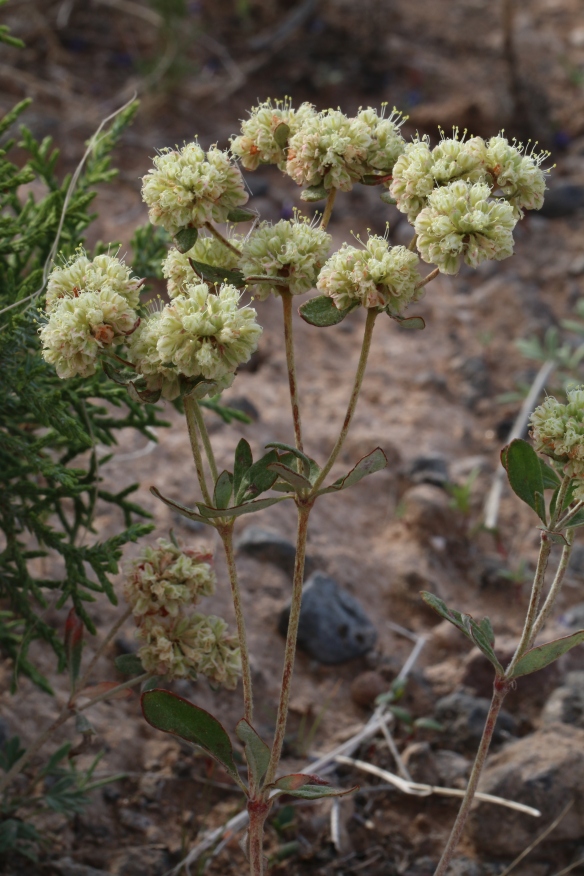Plants herbs or subshrubs, compact or spreading, matted, 0.5–2.5 dm tall, 3–15 dm across, tomentose to floccose; stems with caudex absent or spreading, the aerial flowering stems erect, slender, solid, not fistulose, usually arising directly from a taproot, 0.5–1.5 dm long, tomentose to floccose; leaves basal, typically not in rosettes, the petioles 0.5–6 cm long, tomentose to floccose, the blades usually narrowly elliptic, 1–3 (3.5) cm long, (0.3) 0.5–1 (1.2) cm wide, densely tomentose abaxially, thinly tomentose, floccose or glabrous and grayish to greenish adaxially, the margins entire, plane or undulate and crisped; inflorescences compound-umbellate, branched 2–5 times, the bracts usually semi-foliaceous, those of proximal node 0.5–2 cm long, 0.3–1 cm wide; involucres 4–7 mm long, 2–5 mm wide, tomentose to floccose, the teeth 5–8, erect, 0.1–0.5 mm long; flowers 3–8 mm long, including a 0.7–2 mm long stipelike base, the perianth white to cream, densely pubescent abaxially, the tepals dimorphic, those of outer whorl lanceolate to elliptic, 2–5 mm long, 1–3 mm wide, those of inner whorl lanceolate to fan-shaped, 1.5–6 mm long, 2–4 mm wide, the stamens exserted, 2–4 mm long, the filaments pilose proximally; achenes light brown to brown, 4–5 mm long, glabrous except for sparsely pubescent beak.

Fowers : 3–8 mm long, including a 0.7–2 mm long stipelike base, the perianth white to cream, densely pubescent abaxially.


Flowering Jun-Oct. Sandy to gravelly or infrequently rocky flats and slopes, mixed grassland, saltbush, blackbrush, creosote bush, mesquite, and sagebrush communities, oak, pinyon and/or juniper, and montane conifer woodlands; (1000) 1300–2900 (3100) m.














You must be logged in to post a comment.